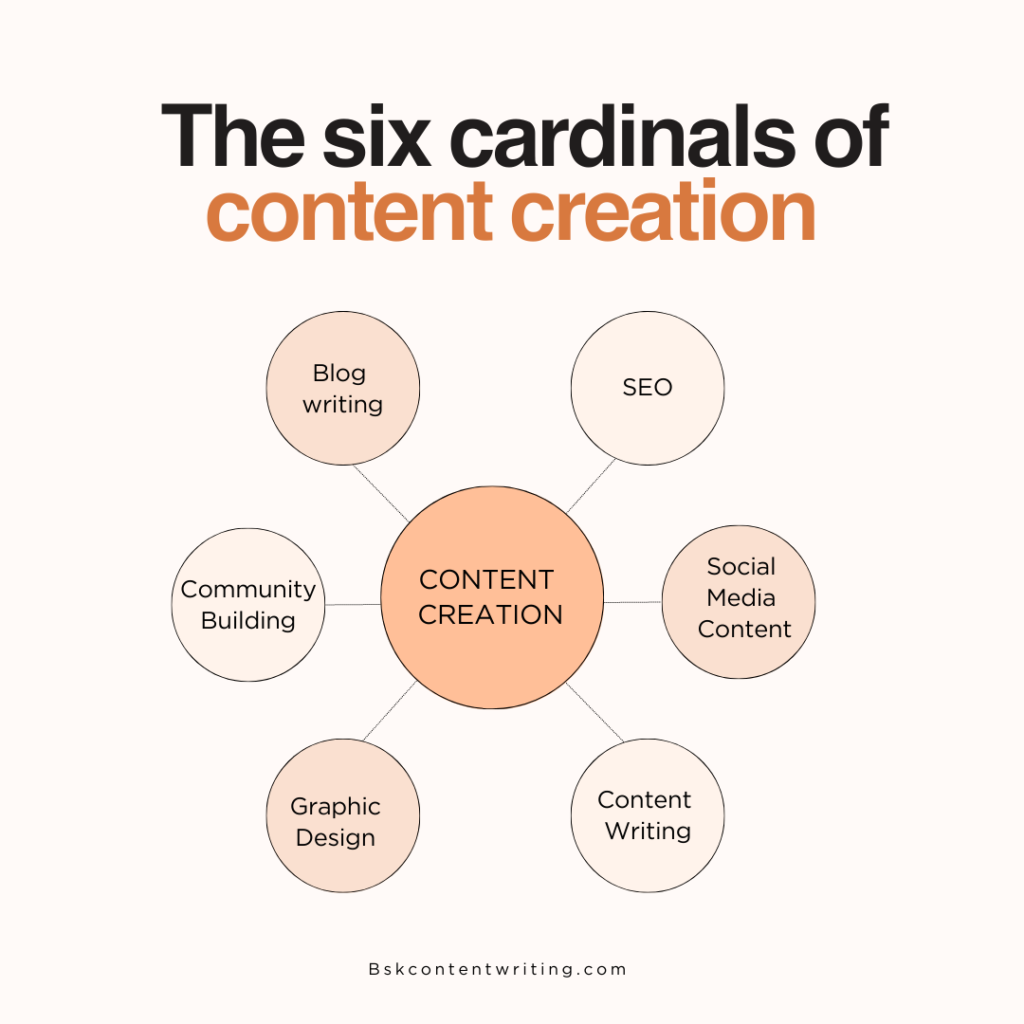
In today’s digital age, the terms “content writing” and “copywriting“ are often used interchangeably, but they are not the same. While both involve the art of writing, they serve distinct purposes and require different skill sets. In this article, we will unravel the differences between content writing and copywriting, shedding light on why they are not to be confused. So, let’s dive right in!
Introduction
When it comes to online communication, content is king. Whether you’re running a blog, an e-commerce website, or managing social media, the words you use matter. Content writing and copywriting are two essential components of effective online communication, and they serve different purposes.
Content Writing: Crafting Engaging Narratives
Content writing is all about storytelling. It involves creating informative, engaging, and valuable content that educates, entertains, or informs your audience. Content writers aim to establish a connection with readers, providing them with useful information or entertaining stories.
Content writing encompasses a wide range of formats, including blog posts, articles, guides, and more. The primary goal here is to engage the audience and keep them on the page. It’s about building trust and authority in your niche.
| Fact | Description |
| 1. Age-Old Practice | Content writing has been around since ancient civilizations, where scribes wrote on clay tablets or papyrus scrolls. |
| 2. SEO Evolution | The term “search engine optimization” (SEO) became popular in the mid-1990s, influencing the way content is written online. |
| 3. Rise of Blogging | The term “blog” comes from “weblog” and was coined in 1997. Today, there are over 600 million blogs globally. |
| 4. Content-Length Matters | Articles with a word count of 2,000+ words tend to rank higher on search engines and receive more shares on social media. |
| 5. Visual Content | Content isn’t just about text; visual content like images, videos, and infographics are essential for engagement. |
| 6. Content Marketing Boom | Content marketing generates about three times as many leads as traditional marketing, but it costs 62% less. |
| 7. Content Is Global | Content is available in numerous languages, with English, Chinese, and Spanish being some of the most widely used. |
| 8. Storytelling Impact | Content that tells a story is 22 times more memorable than simple facts and figures. |
| 9. Content Writers’ Tools | Writers often use tools like grammar checkers, keyword research tools, and content management systems to enhance their work. |
| 10. Evergreen Content | Evergreen content, which remains relevant over time, continues to drive traffic and engagement long after it’s published. |
Copywriting: The Art of Persuasion
On the other hand, copywriting is the art of persuasion. Copywriters create content with the specific intent of driving action. Whether it’s making a purchase, signing up for a newsletter, or clicking on a link, copywriting aims to prompt the reader to take a particular action.

Copywriting: The Art of Persuasion
Copywriting is often used in advertising, email marketing, and sales pages. It’s concise, persuasive, and designed to elicit a response. The words used in copywriting are carefully chosen to appeal to the reader’s emotions and desires.
| Fact | Description |
| 1. Ancient Origins | Copywriting has roots dating back to ancient civilizations when merchants used persuasive language on papyrus scrolls and in marketplaces. |
| 2. John Emory Powers | John Emory Powers is considered one of the earliest known copywriters in the United States, making a significant impact on advertising in the 19th century. |
| 3. The Power of Headlines | On average, 8 out of 10 people read headline copy, but only 2 out of 10 continue reading the rest of the content. |
| 4. The “Dear John” Letter | The “Dear John” letter, traditionally associated with ending relationships, originated as a sales tactic in direct mail advertising. |
| 5. The First Ad Agency | The first advertising agency in the United States, called Volney B. Palmer, opened in Philadelphia in 1841, marking a pivotal moment for copywriting. |
| 6. Copywriting Legends | Legendary copywriters like David Ogilvy and Claude Hopkins have left a lasting legacy with their influential advertising campaigns and books on the subject. |
| 7. Emotion and Persuasion | Effective copywriting often taps into emotions, as studies show that emotions have a more significant impact on decision-making than logic. |
| 8. The Digital Evolution | Copywriting has evolved with the digital age, adapting to various platforms such as websites, email marketing, and social media. |
| 9. A/B Testing | Copywriters often use A/B testing to determine which words and phrases resonate most with audiences, leading to more effective campaigns. |
| 10. Versatile Career | Copywriters often work in advertising agencies, but their skills are also in demand in fields such as content marketing, SEO, and e-commerce. |
Audience Engagement
Content writing focuses on engaging the audience through valuable information. It aims to provide answers to questions, share knowledge, and entertain readers. Content writers aim to build a loyal readership over time by consistently delivering high-quality content.
Copywriting, on the other hand, seeks immediate engagement. It aims to capture the reader’s attention quickly and motivate them to take action. The engagement in copywriting is transactional, with a clear call to action.

Goals and Objectives
The goals of content writing and copywriting differ significantly. Content writing aims to inform, educate, and entertain. Success in content writing is often measured by metrics like page views, time spent on the page, and social shares.
Copywriting, however, is all about conversions. The success of copy is measured by how many people take the desired action, whether it’s making a purchase or filling out a contact form. It’s about generating leads and revenue.
Writing Style and Tone
Content writing typically adopts a conversational and informative tone. It’s about building a relationship with the reader and providing them with valuable insights. The language used is often straightforward and easy to understand.
Copywriting, on the other hand, uses persuasive language and a more direct tone. It’s about convincing the reader to make a decision, and it often employs tactics like urgency and scarcity to drive action.
SEO Focus
Both content writing and copywriting can benefit from SEO (Search Engine Optimization) strategies. However, content writing tends to have a more long-term SEO focus. It aims to create evergreen content that ranks well in search engines and continues to attract organic traffic.
Copywriting may also utilize SEO techniques, but its primary focus is on conversions. It’s about getting the reader to take action immediately, whether they found the content through search or other channels.
| SEO Facts | Content Writing Facts |
| 1. Google Dominance: Google holds a 92.47% global market share in search engines. | 1. Visual Content’s Impact: Content with relevant images gets 94% more views. |
| 2. Long-tail Keywords: Long-tail keywords account for 70% of all web searches. | 2. Evergreen Content: Evergreen content continues to generate traffic for years. |
| 3. Mobile SEO: Over 60% of Google searches come from mobile devices. | 3. Blogging Benefits: Websites with blogs have 434% more indexed pages. |
| 4. User Experience Matters: Google considers user experience factors when ranking websites. | 4. Content-Length Matters: Content pieces over 3,000 words get more traffic and shares. |
| 5. Local SEO: About 46% of Google searches have local intent. | 5. Content Promotion: 70-80% of users ignore paid ads and focus on organic results. |
Measuring Success
As mentioned earlier, success in content writing is often measured by engagement metrics like page views, shares, and comments. It’s about building a loyal readership and establishing authority in a niche.
Copywriting success, on the other hand, is measured by conversion rates and ROI (Return on Investment). It’s about the bottom line and driving revenue for a business.
Conclusion
In conclusion, while content writing and copywriting share the common thread of writing, they serve different purposes and require distinct approaches. Content writing focuses on building relationships, providing valuable information, and engaging readers over the long term. Copywriting, on the other hand, is about persuasion, driving immediate action, and generating conversions.
Both are essential in the world of online communication and understanding the differences between them can help you tailor your content strategy to achieve your specific goals.
FAQs
Is content writing and copywriting the same thing?
No, they are not the same. Content writing is about providing valuable information and engaging readers, while copywriting is about persuading the reader to take a specific action.
Can a single piece of content serve both purposes?
Yes, it’s possible to blend content writing and copywriting techniques in a single piece of content. This can be especially effective for informative blog posts with a clear call to action.
Which is more important, content writing or copywriting?
Both are important, but their significance depends on your goals. If you want to build authority and trust, content writing is crucial. If you want to drive immediate actions like sales, copywriting takes the lead.
Do I need separate writers for content and copy?
Not necessarily. Some writers excel at both content and copywriting. However, it’s essential to understand the distinctions and ensure that your content aligns with your goals.
How can I learn more about content writing and copywriting?
There are numerous resources available online, including courses, blogs, and books, that can help you develop your skills in both content writing and copywriting. Start by exploring these resources to enhance your writing abilities.

